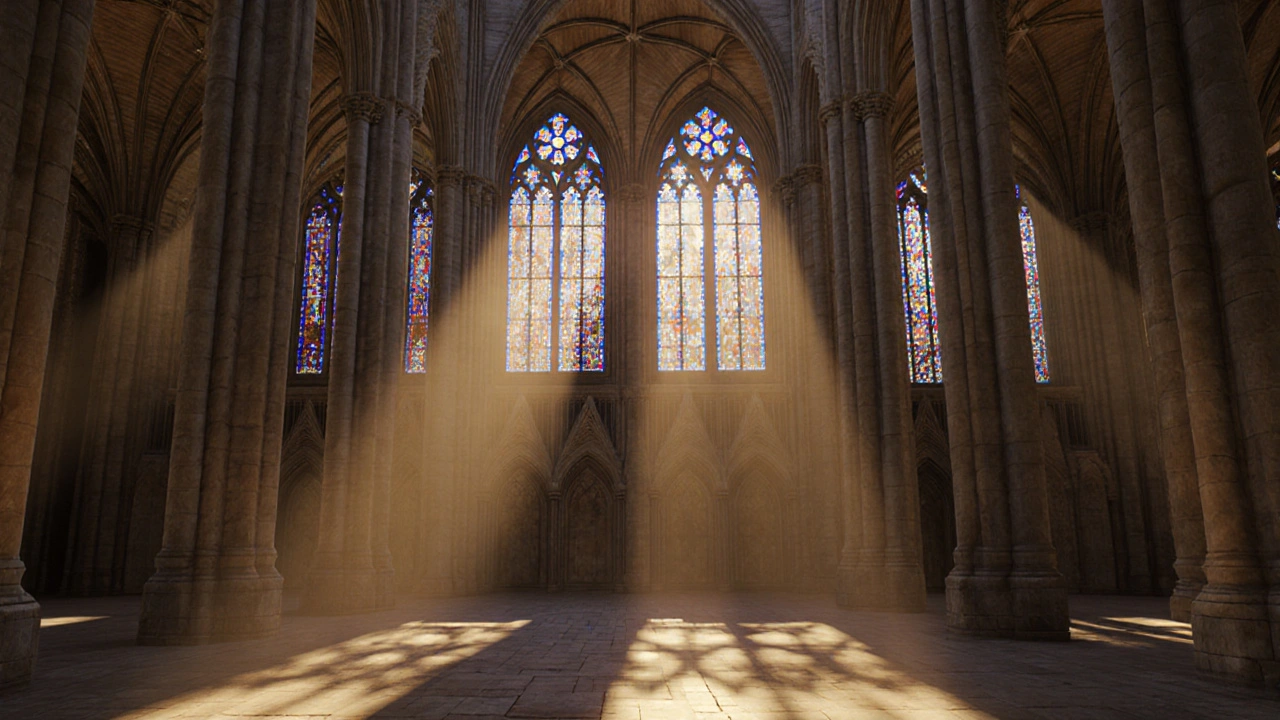Gothic architecture isn't just beautiful-it's brilliant engineering. Discover how pointed arches, flying buttresses, and ribbed vaults defied gravity and turned stone into light-filled cathedrals that still stand today.
Gothic Architecture: How to Spot It and Why It Still Matters
Gothic architecture grabs attention fast. Tall lines, light-filled interiors, and dramatic stonework make these buildings feel alive. If you want to recognize Gothic style on the street or in travel photos, there are simple clues that tell the story.
Key features to look for
Start with the shape: pointed arches are the single easiest sign. Unlike round Roman arches, Gothic arches come to a point and channel weight differently. Look up and you’ll often see ribbed vaults—crossing stone ribs that form a web across the ceiling. Those ribs make tall, long spaces possible without massive walls.
Outside, flying buttresses stand out. They look like stone arms holding the building from the outside. Those supports move stress away from walls so architects could fit bigger windows. Speaking of windows, stained glass is central. Big, colorful rose windows or tall lancet panels flood interiors with changing light. That light was practical and symbolic—the glass told stories and lifted focus upward.
Decor matters too. Gargoyles, carved saints, and detailed tracery (that lace-like stone around windows) are common. Faces and creatures are not just decoration; they mark workshops, donors, or local tales. Masonry is often visible and rough in places, with smooth, detailed carvings in focal areas like portals and altars.
When and where to find Gothic buildings
Gothic architecture began in the 12th century in France and spread across Europe through the 16th century. Cathedrals are the best classroom: Notre-Dame de Paris, Chartres Cathedral, Cologne Cathedral, and Salisbury Cathedral all show classic moves—height, light, and stone detail. Smaller parish churches and university buildings also carry Gothic signs, and you’ll spot Gothic elements reused in later revival styles.
Want to see Gothic locally? Look for old cathedrals, historic town centers, and university campuses. Many cities rebuilt or restored Gothic structures in the 1800s during the Gothic Revival—so some buildings are original, some are later reinterpretations. Either way, the visual language is similar enough to study and enjoy.
Quick tips for visiting: stand back to take in the silhouette, then move close to read the carvings. Inside, follow light patterns—how stained glass changes mood through the day. If you photograph, aim low and wide to capture height, or focus on details like tracery and carved capitals for texture shots.
Gothic architecture feels dramatic because it solves engineering problems with bold visual solutions. Pointed arches, ribbed vaults, flying buttresses, and stained glass work together to create buildings that point skyward and fill interiors with color. Spot those features and you’ll read a Gothic building like a short story—engineers, artists, and communities all written into stone.
Oh boy, let's dive into the world of Gothic architecture, a style that turns buildings into brooding poetry of stone! It's like the medieval folks said, "Let's make our churches look like they're having an eternal existential crisis". Born in the Dark Ages, Gothic architecture embodies the charm of the intense, the elaborate, and the dramatic. With its pointed arches and ribbed vaults, it's as if the buildings were trying to reach out to the heavens, probably asking why they were created in such tumultuous times. So basically, Gothic architecture is the architectural version of a teen angst phase, but one we can all agree is pretty spectacular!


